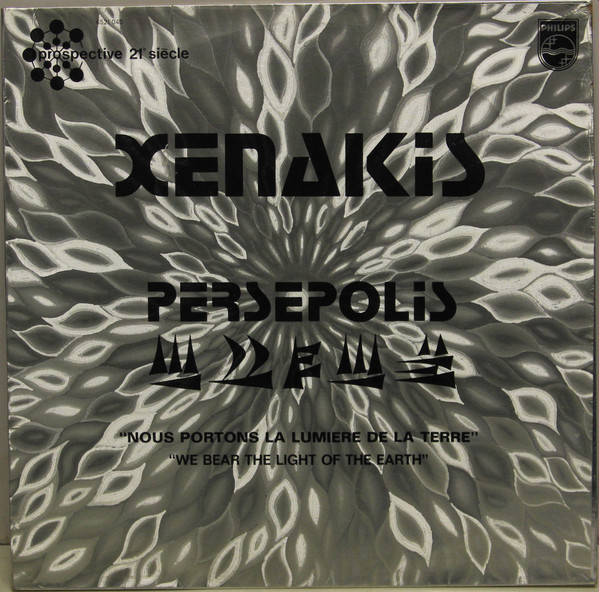Scan barcode
A review by saareman
Persepolis by Aram Yardumian
4.0
Burning Down the House
Review of the Bloomsbury Academic 33 and 1/3 Global Europe paperback edition (February 9, 2023).
Surprisingly for the popular music series, there is a 33 1/3 book for an experimental electronic music recording. This is for the pre-taped musique concrète work Persepolis by the Greek composer Iannis Xenakis (1922-2001). The work was commissioned for the 1971 Shiraz Festival of the Arts in Iran and was broadcast and staged at the ancient ruins of Persepolis, the ceremonial capital of the Persian Achaemenid Empire (c. 550–330 BC).
The Festival of Arts was held shortly before the then-Shah of Iran's celebration of the 2,500th anniversary of the founding of the Persian Empire. Both events met with cultural criticism, the former due to misinterpretation and the latter for its wanton excess. It can be argued (as Yardumian does in this essay) that it all sowed the seeds for the eventual Iranian Revolution (1979) which resulted in the exile of the Shah and the founding of the Islamic Republic of Iran by Ayatollah Khomeini.

Xenakis and assistants prepare for the August 26, 1971 performance at Persepolis, Iran. Image sourced from Festival of Arts Shiraz Persepolis.
It probably didn't help that Xenakis was of Greek origin, as his use of torch-bearing schoolchildren descending down hillsides to the city ruins was interpreted as representing Greek/Macedonian Alexander the Great's (356 BC-323 BC) conquest and destruction of the ancient capital. Having it all accompanied by a soundtrack which most would consider as "noise" added further injury to the insult.

The album cover for the original release of Persepolis on vinyl LP by Philips 1972. The Old Persian cuneiform (
Review of the Bloomsbury Academic 33 and 1/3 Global Europe paperback edition (February 9, 2023).
When you take the risk of performing a Gesamtkunstwerk representing all of Iranian history, its past and future, making use of 130 torch-bearing schoolchildren, gasoline fires and lasers, and a soundtrack of obsessively wrought electroacoustic abstraction, broadcast at high volume to polite, high-heels-wearing society in the Iranian desert, someone is going to take issue with it. However pure your intentions, the public is going to find - or invent - flaws in them.
Surprisingly for the popular music series, there is a 33 1/3 book for an experimental electronic music recording. This is for the pre-taped musique concrète work Persepolis by the Greek composer Iannis Xenakis (1922-2001). The work was commissioned for the 1971 Shiraz Festival of the Arts in Iran and was broadcast and staged at the ancient ruins of Persepolis, the ceremonial capital of the Persian Achaemenid Empire (c. 550–330 BC).
The Festival of Arts was held shortly before the then-Shah of Iran's celebration of the 2,500th anniversary of the founding of the Persian Empire. Both events met with cultural criticism, the former due to misinterpretation and the latter for its wanton excess. It can be argued (as Yardumian does in this essay) that it all sowed the seeds for the eventual Iranian Revolution (1979) which resulted in the exile of the Shah and the founding of the Islamic Republic of Iran by Ayatollah Khomeini.

Xenakis and assistants prepare for the August 26, 1971 performance at Persepolis, Iran. Image sourced from Festival of Arts Shiraz Persepolis.
It probably didn't help that Xenakis was of Greek origin, as his use of torch-bearing schoolchildren descending down hillsides to the city ruins was interpreted as representing Greek/Macedonian Alexander the Great's (356 BC-323 BC) conquest and destruction of the ancient capital. Having it all accompanied by a soundtrack which most would consider as "noise" added further injury to the insult.

The album cover for the original release of Persepolis on vinyl LP by Philips 1972. The Old Persian cuneiform (